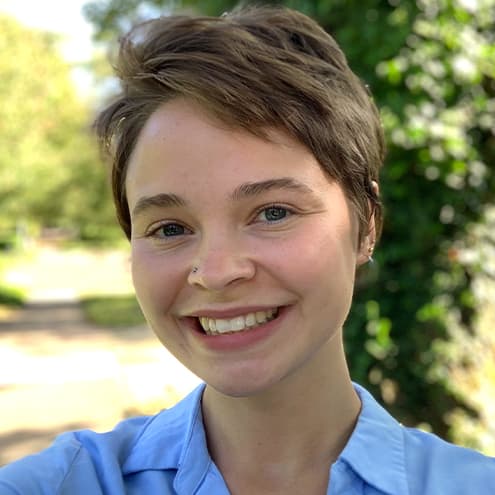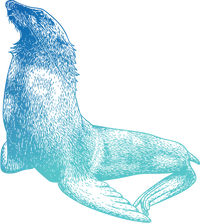Our new Empathy Fellowship program kicked off last year, and the first cohort has completed their one-year terms! The capstone of these full-time, paid, fully benefited positions is to develop an empathy community action project (ECAP). The fellows research, implement and present on projects in order to apply all that they’ve learned to a real-world, marine-conservation-related issue that impacts themselves and their community. (Interested in applying? Visit our Empathy Fellowship page for details.)
Now our first two fellows offer reflections on their experiences in the program. Below we hear from Jules Rader with their thoughts. (You can read the second installment by Astrid Moncaleano here.)
Part 1 of 2: Empathy Fellow Jules Rader
As this fellowship comes to an end, I can honestly and gratefully say I am sad to leave. I learned so much and am leaving the position with an even stronger conviction that empathy and equity must always lead my approach to conservation work.
My ECAP was an eight-week digital program called “The Aqueerium: a marine conservation club for LGBTQ+ youth.” Twenty-three LGBTQIA+ youth (ages 13–17) joined from across the U.S. to participate. We also had six wonderful volunteer mentors from the LGBTQIA+ community helping in the program.
The main goals of my ECAP were to:
- Create a supportive, affirming community space for LGBTQIA+ youth at the Aquarium, so they feel welcome and safe and can see themselves represented in marine science and conservation.
- Empower LGBTQ+ youth to feel they can pursue a career or continue to advocate for marine conservation and be their full self in this space—seen and respected for who they are.
- Inspire empathy for marine invertebrates, specifically by feeling connected to nudibranchs. Use empathy as a tool for conservation.
- Encourage LGBTQ+ youth to advocate for animals and the environment, and subsequently feel empowered to advocate for themselves, others and their communities.

I set out to create this program because I found my community in LGBTQIA+ activist spaces and wanted to foster a space that would engage with and uplift LGBTQIA+ youth and also make learning and science fun and approachable! I left STEM because I did not feel celebrated, seen or represented by my science teachers, and I didn’t see social justice and equity being prioritized. In this program, I hoped to empower young people to pursue their interests and hear from many different LGBTQIA+ folks in conservation.
During the first meeting we came up with community guidelines—an important way to set the tone for creating an inclusive and welcoming space together.
Over the following three weeks we split into groups, each choosing a nudibranch mascot to research and present to the rest of the Aqueerium. (A key takeaway was the importance of relationship-building and designing a program with specific community and participant needs in mind, as well as being open to learning from our participants and working together. With ongoing feedback from anonymous surveys after each meeting, we could make changes and improve the program as we went along.)
On the fifth week, we hosted a virtual panel, LGBTQ+ in Conservation, featuring five panelists and 38 attendees—including Aqueerium participants and mentors, Aquarium staff, and young LGBTQIA+ folks interested in conservation. In addition to communicating and building understanding with panelists beforehand, a key part of showing our respect for them was providing fair and equitable compensation for their time and work. We received very positive feedback from our panelists, who recognized the Aqueerium space as welcoming and healing. One panelist even commented that they wished a club like the Aqueerium had existed when they were young. That is exactly why this project felt important.
The feedback we got from an anonymous survey at the end of the program showed that this really was a welcoming and inclusive space, and that the program met everyone’s expectations for what they hoped to learn. We found:
- Half of the participants had never participated in an aquarium or conservation program before.
- Half had never joined a group for LGBTQIA+ youth before.
- Half had not found other opportunities to connect with the LGBTQIA+ youth community over a shared interest (such as marine conservation, activism, art, etc.)
Clearly, these kinds of programs are still hard to come by, and that is exactly why we need more of them. I am grateful to have had the opportunity to work on something so important to me, and so needed in an infinitely difficult time, when many LGBTQIA+ young people have been isolated from one another. I leave this fellowship eager to continue working in conservation education, and certain of the urgent necessity of centering empathy and equity in this field.
